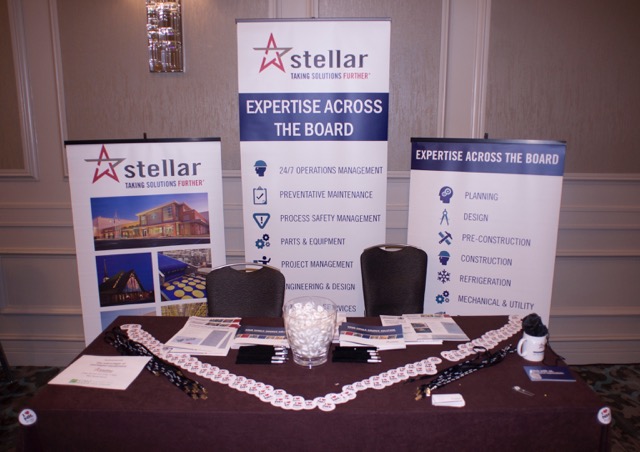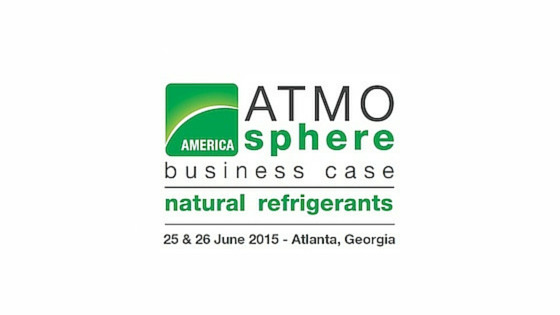I recently joined hundreds of refrigeration stakeholders in Atlanta for ATMOsphere America 2015, an annual natural refrigerants conference. Stellar was among the 37 sponsors, and I among the group of 60-plus speakers, leading a presentation on the advantages of packaged refrigeration equipment. I also attended several sessions myself, leaving the conference with valuable takeaways on the refrigeration industry, including my favorites below:
Overwhelming consensus for the state of the refrigeration industry
While each session focused on a specific refrigeration topic, there were two overarching takeaways from the conference:
-
There is a need and desire for low-charge packaged NH3 and CO2/NH3 cascade systems. The market for these packaged solutions will continue to expand over the next several years.
-
Rules regulating the use of hydrofluorocarbons (HFCs) will NOT let up, and the need for natural refrigerants will continue to increase. Though what lies ahead in terms of legislation and oversight has yet to be decided, these are inevitable.
5 key ATMOsphere sessions and takeaways
1. [Low charge ammonia] A wave of packaged solutions is coming
Kurt Liebendorfer
Vice President, Evapco, Inc.
Over the next five years, the packaged low-charge ammonia (NH3) and CO2/NH3 cascade markets are expected to expand rapidly. However, market adoption of low-charge ammonia systems will depend on the availability of:
- High-quality projects
- Low-price product
- Reliable system operation
- Consistency and repeatability at high volumes
Some advantages of packaged low-charge NH3 and CO2/NH3 cascade systems include:
- Ease of deployment
- Reduced on-site construction time
- Lower energy costs
- Simplified seismic code compliance
2. [Regulations and standards] Domestic Approaches to Address High-GWP HFCs
Gerald Wozniak
Environmental Engineer, EPA
If left unchecked, HFCs emissions could rise to nearly 20 percent of total carbon dioxide emissions by 2050. To combat this, the EPA announced plans to update Section 608 (the refrigeration recycling rule) regulations in November 2014, with the following goals in mind:
- Reduce emissions of high global warming potential (GWP) refrigerants by expanding 608 to HFCs
- Simplify, clarify and improve existing requirements
- The EPA is now drafting its proposal. The rule is due in late 2015 with the final rule expected in 2016
3. [Regulations and standards] U.S. Department of Energy’s (DOE) Building Technologies Office: Refrigerant R&D
Antonio M. Bouza
Technology Manager, U.S. Department of Energy
The Building Technology Office’s main goal is to develop energy-saving technologies while introducing them in the simplest application first, with the highest probability of success. Some additional goals for the Department of Energy’s Building Technology Office regarding HVAC, water heating and appliance R&D include:
- By 2020, develop technologies that enable 10-percent energy savings in HVAC; 20-percent energy savings in water heating and 15-percent energy savings in appliances
- By 2030, develop technologies that enable 25-percent energy savings in HVAC; 35-percent energy savings in water heating and 30-percent energy savings in appliances
- Maintain the competitiveness of American industry
Overall, their efforts to conserve energy savings in HVAC through R&D focus on the use of natural refrigerants such as CO2 and ammonia.
4. [Industrial refrigeration] New Developments in Natural Refrigerant Equipment
Benoit Rodier
Director of Business Development, CIMCO Refrigeration
Hydrochlorofluorocarbons (HFCs) and hydrofluorocarbons (HFCs) are on a time-scheduled ban depending on the country. Manufacturers and contractors must focus efforts to develop innovative ways to use natural refrigerants so they aren’t left behind. For example, Japan has shortened its deadline and has created an incentive to help the market move from R-22.
Some problems facing the construction of giant NH3 refrigeration plants include:
- Difficulty finding experienced operators / trained technicians who can construct, operate and maintain NH3 plants
- Managerial risk including costs, time and materials
- High risk to workers due to the large NH3 charge
- Demand for a high volume of equipment and workers
However, packaged equipment alleviates these problems because:
- The refrigeration cycle is constructed, tested and completed at the supplier’s factory
- Packaged systems can be standardized and easily duplicated
- On-site construction time is shortened and minimal piping and wiring are required
- NH3 charging is minimized, with complete automatic control
- Compressor capacity is optimized to plant load, leading to increased energy savings
5. [Industrial refrigeration] Advanced DX Ammonia (ADX) Proves Sustainability
Terry L. Chapp
National Business Development Manager, Danfoss
Jeremy Olberding
Vice President, Sales, Colmac Coil
Advanced DX ammonia allows industrial refrigeration systems as large as 1,800 tons of refrigeration to operate with a system ammonia charge under 10,000 lbs. It offers a value-added alternative to HFC commercial systems and addresses technical challenges critical to proper operation of DX ammonia at low temperatures, in addition to:
- Stratified/wavy flow in evaporator tubes
- Water in ammonia
- Refrigerant distribution in evaporators
- Supply of clean, dry, subcooled ammonia to evaporators
There has been a resurgence in ammonia DX systems because:
- Ammonia is natural / has excellent heat transfer characteristics
- Ammonia is zero ozone depletion potential (ODP) and zero GWP
- There is lower energy cost for the facility owner
- There is lower lifecycle cost of the system
- Moving away from HFCs is not required
Were you at ATMOsphere? What were some sessions that stuck out to you? Comment below.
For information from my ATMOsphere presentation on packaged refrigeration, feel free to email me at foodforthought@stellar.net or connect with me on LinkedIn.





